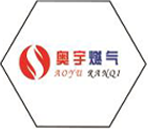
Sep . 28, 2024 19:12
Back to list
Understanding the Functionality and Applications of Pneumatic Valves in Industrial Systems
Understanding Pneumatic Valves Key Components in Automation
Pneumatic valves play a crucial role in the world of automation and control systems, ensuring the efficient operation of machinery that rely on compressed air. These valves are designed to regulate the flow and direction of air within pneumatic systems, making them essential for various industrial applications. In this article, we will explore the types, functions, and advantages of pneumatic valves.
Types of Pneumatic Valves
Pneumatic valves come in various types, each designed for specific functions and applications
. The most common types include1. Directional Control Valves These valves control the path of the air supply and can be operated manually, electrically, or pneumatically. They determine the movement of actuators, such as cylinders and airbags. Common configurations include 2/2, 3/2, and 5/2 valves, indicating the number of ports and positions.
2. Flow Control Valves Flow control valves manage the speed of air exhaust from pneumatic actuators, allowing for precise control of movement. They can be adjustable or non-adjustable and are often used to ensure smooth operation and prevent sudden jerks in machinery.
3. Pressure Control Valves These valves maintain the desired pressure levels within a pneumatic system. They can be pressure relief valves, which prevent excess pressure, or pressure regulating valves, which ensure pressure remains constant over varying flow rates.
4. Check Valves Check valves are designed to allow air to flow in one direction only, preventing backflow and protecting equipment from damage. They are critical in systems where air must consistently flow in a specific direction.
Functions and Benefits
pneumatic valve

The primary function of pneumatic valves is to manage the flow of compressed air, which powers various tools and machinery in industrial settings. Here are some key benefits of implementing pneumatic valves in automation systems
- Efficiency Pneumatic valves help streamline the operation of machines, ensuring that air is directed precisely where it is needed. This efficiency reduces energy consumption and improves overall productivity.
- Precision Control With flow control and directional control valves, operators can achieve precise movement of actuators, allowing for highly accurate operations. This is particularly important in assembly processes where the positioning of components is critical.
- Safety Pneumatic valves contribute to system safety by regulating pressure and preventing overexertion in machinery. Pressure relief valves, for instance, help avoid catastrophic failures by releasing excess pressure.
- Simplicity and Maintenance Pneumatic systems are often simpler and easier to maintain than their hydraulic counterparts. Pneumatic valves generally require less maintenance, which can result in reduced downtime and lower operational costs.
Applications in Various Industries
Pneumatic valves are widely used across multiple industries, including manufacturing, automotive, food and beverage, and pharmaceutical sectors. They are integral in applications such as
- Automated assembly lines where precise movements are essential. - Packaging machinery that relies on quick and efficient air-powered operations. - Robotics that require controlled motion for tasks such as welding, cutting, or painting.
In conclusion, pneumatic valves are an indispensable component of pneumatic systems, providing critical functions that enhance the efficiency, safety, and precision of automated processes. With ongoing advancements in technology, pneumatic valves continue to evolve, offering even greater capabilities for industrial applications. As industries shift towards more automated solutions, understanding the significance and functioning of pneumatic valves becomes increasingly important. Whether you are designing a new system or maintaining an existing one, proper knowledge of pneumatic valves will undoubtedly contribute to optimized performance and reliability.
Latest news
-
Safety Valve Spring-Loaded Design Overpressure ProtectionNewsJul.25,2025
-
Precision Voltage Regulator AC5 Accuracy Grade PerformanceNewsJul.25,2025
-
Natural Gas Pressure Regulating Skid Industrial Pipeline ApplicationsNewsJul.25,2025
-
Natural Gas Filter Stainless Steel Mesh Element DesignNewsJul.25,2025
-
Gas Pressure Regulator Valve Direct-Acting Spring-Loaded DesignNewsJul.25,2025
-
Decompression Equipment Multi-Stage Heat Exchange System DesignNewsJul.25,2025

